#Beaver Meadows
Text

Rocky Mountain National Park looks amazing right now. Fall color is at peak or just a little past peak in many areas of Rocky right now.
This morning we had a stunning sunrise over Longs Peak, the parks highest peak, framed with colorful aspens in Beaver Meadows below.
📸 by Thomas Mangan
#Thomas Mangan#TheRockyGallery#RMNP#Beaver Meadows#Amazing#Beautiful#Nature#Travel#Photography#Adventure
8 notes
·
View notes
Text
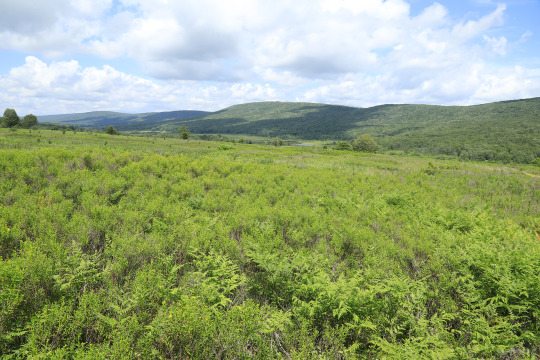
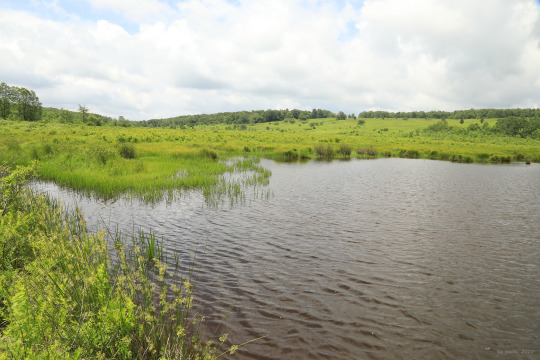


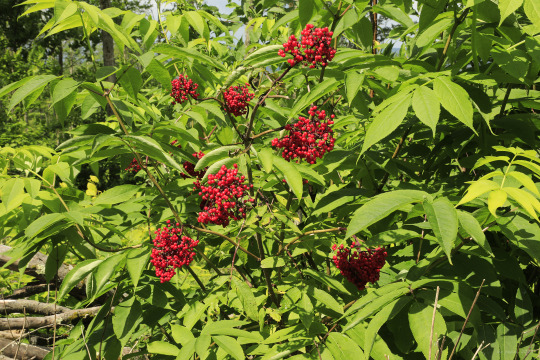
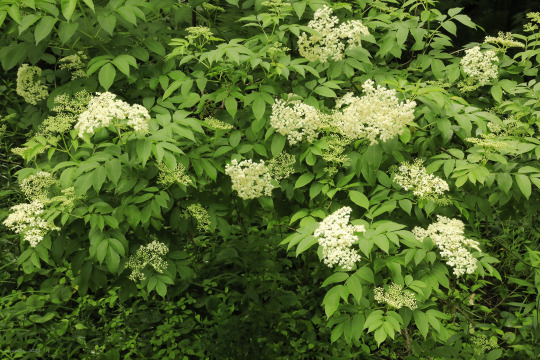


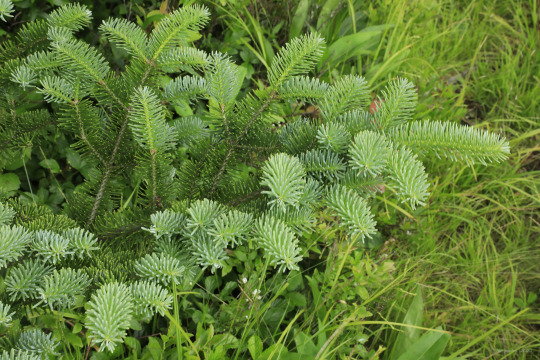


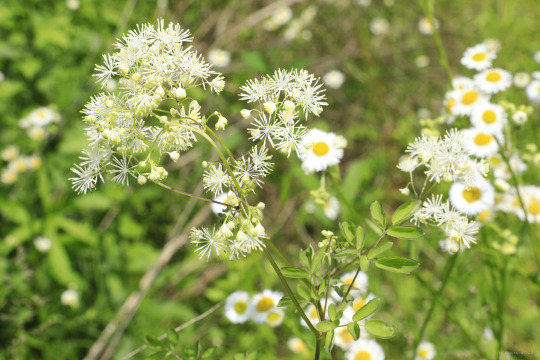

The northern end of Canaan Valley is characterized by regenerating northern hardwood forests interspersed with red spruce, open fields converting from pasture to heath, and beaver-curated wetlands. When the first white settlers arrived in the mid-1800's, the valley was a nearly impenetrable wilderness composed of mud-sucking "muskegs", gnarly rhododendron thickets, and monstrous stands of red spruce and eastern hemlock. Within 50 years, it was all gone, cut over and burned down down to bare rock. Salvation for this "Land of Canaan" has only recently come in the form of the Canaan Valley National Wildlife Refuge, which has set about the painstaking restoration of the valley's diverse (and occasionally threatened or endangered) plant and animal communities, some reaching their southernmost limits in these mountains.
From top: a view toward Cabin Mountain from Middle Ridge, whose open flank is overrun by lowbush blackberry, mountain laurel, bushy St. John's wort, bracken fern, and dotted hawthorn; several of the beaver-engineered wetlands, a mecca for birdwatchers from throughout the Mid-Atlantic region; the blazing red berries of red elderberry (Sambucus racemosa), a hugely important food source for local wildlife; the fanning white corymbs of American black elderberry (Sambucus canadensis), which comes into bloom about two months after red elderberry; quaking aspen (Populus tremuloides), whose delicate leaves flutter in unison at the slightest breeze; a beautiful young Canaan fir (Abies balsamea var phanerolepsis), a subspecies of balsam fir whose fragrant, blue foliage and high needle retention have made it increasingly popular as an ornamental; a lovely patch of hairy hedge nettle (Stachys hispida), a stately native mint; tall meadow rue (Thalictrum pubescens), a wetlands-loving perennial that clumps impressively along streambanks and bog margins; and lowbush blueberry (Vaccinium angustifolium), whose berries are just now starting to ripen.
#appalachia#vandalia#west virginia#wildflowers#flora#allegheny mountains#canaan valley national wildlife refuge#canaan valley#wetlands#beaver ponds#red elderberry#red-berried elder#american black elderberry#canada elderberry#quaking aspen#canaan fir#hairy hedge nettle#tall meadow rue#king of the meadow
73 notes
·
View notes
Text
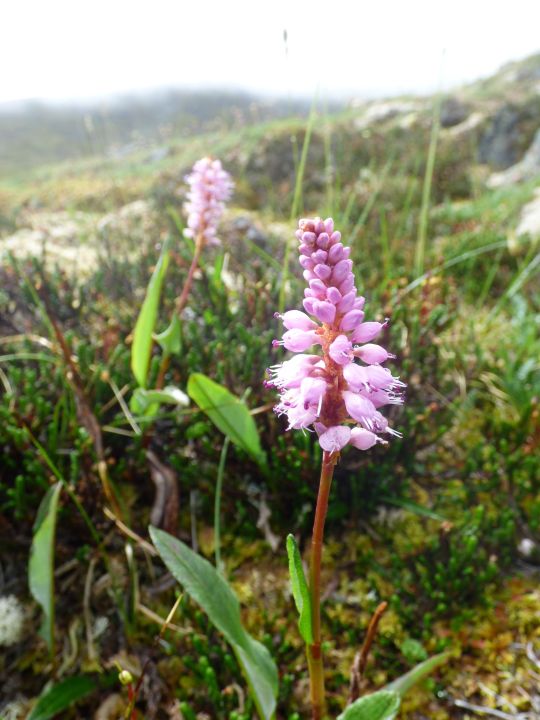
Bistorta plumosa (Polygonaceae)
meadow bistort
You know what? It's been a while since I posted a vascular plant and these were one of my favourites from the bioblitz.
near Koidern | July 18, 2022
#plants#botany#Bistorta#Bistorta plumosa#Polygonaceae#Caryophyllales#flower#flowers#meadow bistort#flora of YT#photo thursday#on fleek in beaver creek
74 notes
·
View notes
Text
🎣🪵Splash Mountain: Morrow Meadows🪵🎣
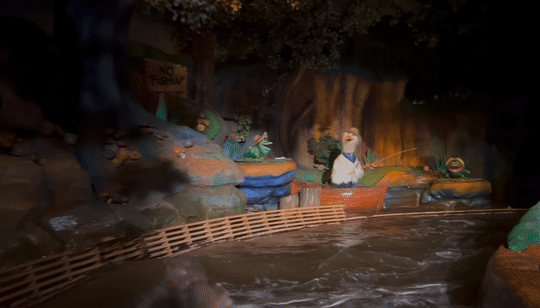



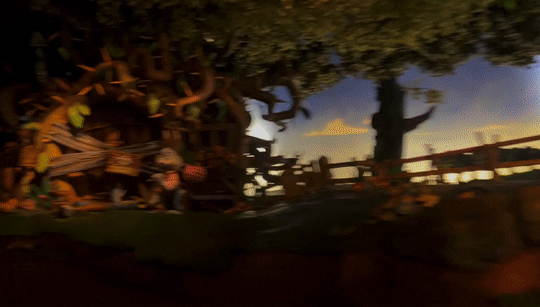
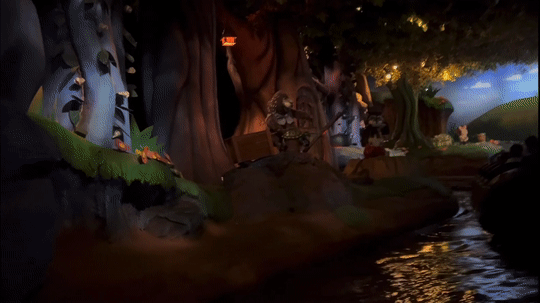
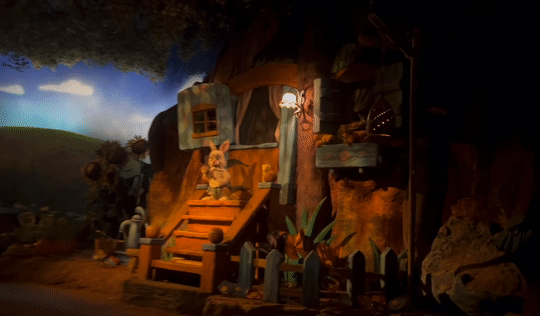


How do you do? The name, Morrow Meadows, comes from an ID tag on some props post-closure. I quite like the name.
#my gifs#splash mountain#morrow meadows#disney parks#WDW#brer rabbit#mr. bluebird#brer fox#brer bear#splash mountain geese#brer raccoon#brer beaver#free to use#gifs
0 notes
Text

Is Oregon still “The Friendly Beaver State?” Asking for a friend.
0 notes
Text
Aesthetic sensibilities are deeply subjective, and hard to acknowledge and analyse clearly. They take root in us from the moment we’re born. They bind us to a particular view of the landscape, something we begin to think of as ‘natural’ or, at least, benign. What we see as children, particularly where we grow up, becomes what we want to continue to see, and what we want our children to see. Nostalgia, and the sense of security that nostalgia brings, binds us to the familiar. We are persuaded, too, by our own absorption in this aesthetic that what we are seeing has been here for ever. We believe the countryside around us, or something very similar to it, has persisted for centuries and the wildlife within it, if not exactly the same, is at least a fair representation of what has been here for centuries. But the ecological processes of the past are hard for the layman – and often even conservation professionals – to grasp.
We are blinded by the immediacy of the present. We look at the landscape and see what is there, not what is missing. And if we do appreciate some sort of ecological loss and change, we tend to go only as far back as our childhood memories, or the memories of our parents or grandparents who tell us ‘there used to be hundreds of lapwings in my day’, ‘skylarks and song thrushes were ten-a-penny’, ‘the fields round here used to be red with poppies and blue with cornflowers’, ‘cod was the poor man’s fish when I was a nipper’. We are blind to the fact that in our grandparents’ grandparents’ day there would have been species-rich wildflower meadows in every parish and coppice woods teeming with butterflies. They would have heard corncrakes and bitterns, seen clouds of turtle doves, thousands of lapwings and hundreds more skylarks. A mere four generations ago they knew rivers swimming with burbot – now extinct in Britain – and eels, and their summer nights were peppered with bats and moths and glow-worms. Their grandparents, in turn, saw nightjars settling on dusty country lanes and even hawking for moths around the street lamps in towns, and spotted flycatchers in every orchard, and meadow pipits everywhere from salt-flats to the crowns of mountains. They saw banks of giant cod and migrating tuna in British waters. They saw our muddy North Sea clear as gin, filtered by oyster beds as large as Wales. And their grandparents, in turn, living at the time of the last beaver in Britain, would have known great bustards, and watched shoals of herring five miles long and three miles broad migrating within sight of the shore, chased by schools of dolphins and sperm whales and the occasional great white shark. We don’t have to look too deeply into the history books, into contemporary accounts, for scenes dramatically different to our own to be normal. Yet we live in denial of these catastrophic losses.
Isabella Tree, Wilding: The Return of Nature to a British Farm
59 notes
·
View notes
Text
Cryptidclaw's WC Prefixes List!
Yall said you were interested in seeing it so here it is!
This is a collection of mostly Flora, Fauna, Rocks, and other such things that can be found in Britain since that’s where the books take place!
I also have other Prefixes that have to do with pelt colors and patterns as well!
Here’s a link to the doc if you dont want to expand a 650 word list on your Tumblr feed lol! the doc is also in my drive linked in my pined post!
below is the actual list! If there are any names you think I should add plz tell me!
EDIT: I will update the doc with new names as I come up with them or have them suggested to me, but I wont update the list on this post! Plz visit my doc for a more updated version!
Animals
Mammal
Badger
Bat
Bear
Beaver
Bison
Boar
Buck
Calf
Cow
Deer
Elk
Fawn
Ferret
Fox
Goat
Hare
Horse
Lamb
Lynx
Marten
Mole
Mouse
Otter
Rabbit
Rat
Seal
Sheep
Shrew
Squirrel
Stoat
Vole
Weasel
Wolf
Wolverine
Amphibians
Frog
Newt
Toad
Reptiles
Scale
Adder
Lizard
Snake
Turtle
Shell
Birds
Bird
Down
Feather
Albatross
Bittern
Buzzard
Chaffinch
Chick
Chicken
Coot
Cormorant
Corvid
Crane
Crow
Curlew
Dove
Duck
Dunlin
Eagle
Egret
Falcon
Finch
Gannet
Goose
Grouse
Gull
Hawk
Hen
Heron
Ibis
Jackdaw
Jay
Kestrel
Kite
Lark
Magpie
Mallard
Merlin
Mockingbird
Murrelet
Nightingale
Osprey
Owl
Partridge
Pelican
Peregrine
Petrel
Pheasant
Pigeon
Plover
Puffin
Quail
Raven
Robin
Rook
Rooster
Ruff
Shrike
Snipe
Sparrow
Starling
Stork
Swallow
Swan
Swift
Tern
Thrasher
Thrush
Vulture
Warbler
Whimbrel
Wren
Freshwater Fish
Fish
Bass
Bream
Carp
Dace
Eel
Lamprey
Loach
Minnow
Perch
Pike
Rudd
Salmon
Sterlet
Tench
Trout
Roach
Saltwater fish and other Sea creatures (would cats be able to find some of these? Probably not, I don't care tho)
Alge
Barnacle
Bass (Saltwater version)
Bream (Saltwater version)
Brill
Clam
Cod
Crab
Dolphin
Eel (Saltwater version)
Flounder
Garfish
Halibut
Kelp
Lobster
Mackerel
Mollusk
Orca
Prawn
Ray
Seal
Shark
Shrimp
Starfish
Sting
Urchin
Whale
Insects and Arachnids
Honey
Insect
Web
Ant
Bee
Beetle
Bug
Butterfly
Caterpillar
Cricket
Damselfly
Dragonfly
Fly
Grasshopper
Grub
Hornet
Maggot
Moth
Spider
Wasp
Worm
Trees
Acorn
Bark
Branch
Forest
Hollow
Log
Root
Stump
Timber
Tree
Twig
Wood
Alder
Apple
Ash
Aspen
Beech
Birch
Cedar
Cherry
Chestnut
Cypress
Elm
Fir
Hawthorn
Hazel
Hemlock
Linden
Maple
Oak
Pear
Poplar
Rowan
Redwood
Spruce
Willow
Yew
Flowers, Shrubs and Other plants
Berry
Blossom
Briar
Field
Flower
Leaf
Meadow
Needle
Petal
Shrub
Stem
Thicket
Thorn
Vine
Anemone
Apricot
Barley
Bellflower
Bluebell
Borage
Bracken
Bramble
Briar
Burnet
Buttercup
Campion
Chamomile
Chanterelle
Chicory
Clover
Cornflower
Daffodil
Daisy
Dandelion
Dogwood
Fallow
Fennel
Fern
Flax
Foxglove
Furze
Garlic
Ginger
Gorse
Grass
Hay
Heather
Holly
Honeysuckle
Hop
Hyacinth
Iris
Ivy
Juniper
Lavender
Lichen
Lilac
Lilly
Mallow
Marigold
Mint
Mistletoe
Moss
Moss
Mushroom
Nettle
Nightshade
Oat
Olive
Orchid
Parsley
Periwinkle
Pine
Poppy
Primrose
Privet
Raspberry
Reed
Reedmace
Rose
Rush
Rye
Saffron
Sage
Sedge
Seed
Snowdrop
Spindle
Strawberry
Tangerine
Tansy
Teasel
Thistle
Thrift
Thyme
Violet
Weed
Wheat
Woodruff
Yarrow
Rocks and earth
Agate
Amber
Amethyst
Arch
Basalt
Bounder
Cave
Chalk
Coal
Copper
Dirt
Dust
Flint
Garnet
Gold
Granite
Hill
Iron
Jagged
Jet
Mountain
Mud
Peak
Pebble
Pinnacle
Pit
Quartz
Ridge
Rock
Rubble
Ruby
Rust(y)
Sand
Sapphire
Sediment
Silt
Silver
Slate
Soil
Spire
Stone
Trench
Zircon
Water Formations
Bay
Cove
Creek
Delta
Lake
Marsh
Ocean
Pool
Puddle
River
Sea
Water
Weather and such
Autumn
Avalanche
Balmy
Blaze
Blizzard
Breeze
Burnt
Chill
Cinder
Cloud
Cold
Dew
Drift
Drizzle
Drought
Dry
Ember
Fall
Fire
Flame
Flood
Fog
Freeze
Frost
Frozen
Gale
Gust
Hail
Ice
Icicle
Lightening
Mist
Muggy
Rain
Scorch
Singe
Sky
Sleet
Sloe
Smoke
Snow
Snowflake
Soot
Sorrel
Spark
Spring
Steam
Storm
Summer
Sun
Thunder
Water
Wave
Wet
Wind
Winter
Celestial??
Comet
Dawn
Dusk
Evening
Midnight
Moon
Morning
Night
Noon
Twilight
Cat Features, Traits, and Misc.
Azure
Beige
Big
Black
Blonde
Blotch(ed)
Blue
Bounce
Bright
Brindle
Broken
Bronze
Brown
Bumble
Burgundy
Call
Carmine
Claw
Cobalt
Cream
Crimson
Cry
Curl(y)
Dapple
Dark
Dot(ted)
Dusky
Ebony
Echo
Fallen
Fleck(ed)
Fluffy
Freckle
Ginger
Golden
Gray
Green
Heavy
Kink
Knot(ted)
Light
Little
Lost
Loud
Marbled
Mew
Milk
Mottle
Mumble
Ochre
Odd
One
Orange
Pale
Patch(ed)
Pounce
Prickle
Ragged
Red
Ripple
Rough
Rugged
Russet
Scarlet
Shade
Shaggy
Sharp
Shimmer
Shining
Small
Smudge
Soft
Song
Speckle
Spike
Splash
Spot(ted)
Streak
Stripe(d)
Strong
Stump(y)
Sweet
Tall
Talon
Tangle
Tatter(ed)
Tawny
Tiny
Tough
Tumble
Twist
Violet
Whisker
Whisper
White
Wild
Wooly
Yellow
#cryptidclaw's warriors au#?#Im tempted to use these in the au#some characters deserve some more fun names hehe#rise of change#warrior cats#warrior cats design#warriors#warriors names#warriors naming#warriors prefixes
542 notes
·
View notes
Text

In Idaho, beavers can be something of nuisance, chewing down trees and building dams that flood yards and fields. In the 1930s, officials began trapping beavers near cities and towns and dropping them — sometimes by parachute — into remote areas.

In one such area, Baugh Creek, beavers have visibly altered the landscape, as shown in newly released satellite imagery from NASA. Beavers erected dams that formed ponds and flooded meadows, supporting the growth of grasses and shrubs.
Flooded stretches along Baugh Creek are well guarded against drought and fire. When the Sharps Fire burned through the area in 2018, it left unsinged those parts where beavers had settled. (picture above)
233 notes
·
View notes
Text

All my mediocre photomode captures for rdr2 in one place.
Mostly Sadie, Molly and Arthur ✨
Feel free to save just like/reblog if you do 😌
Sadie Adler
Shady Belle / part 2 / part 3
Beaver hollow / part 2
Random / Part 2
Strawberry
Scarlet Meadows
Saint Denis
Blackwater
Arthur Morgan
Random / part 2
Central union railroad
Hunting with hamish
Horseshoe overlook
Shady Belle
Saint Denis
Molly O’Shea
Shady Belle / part 2 / part 3 / part 4
Horseshoe overlook / part 2
John Marston
Clemens point
Dutch Van Der Linde
Horseshoe overlook
Shady Belle
Other
Mary Linton
#I have a tlou photomode masterlist so might as well do a rdr one too#cause I have a lottt of drafts#I’ve only been taking pics from chapter 4 tho.#odds I’ll do a immediate playthrough 2 when I finish tho lmao#arthur morgan#sadie adler#John marston#dutch van der linde#van der linde gang#red dead redemption 2#rdr2 photography#rdr2#rdr icons#Arthur Morgan icons#Sadie Adler icons#icons
29 notes
·
View notes
Text

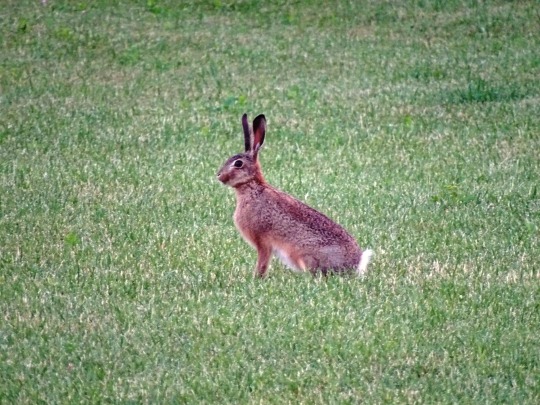


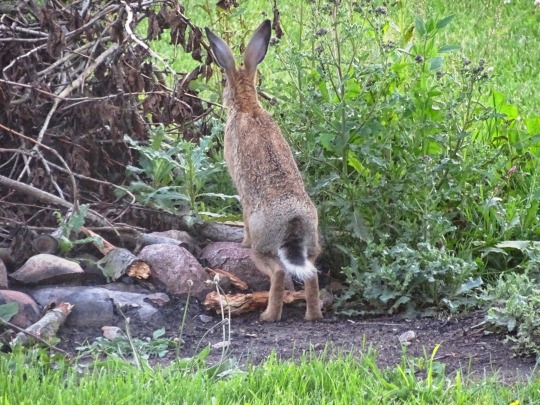




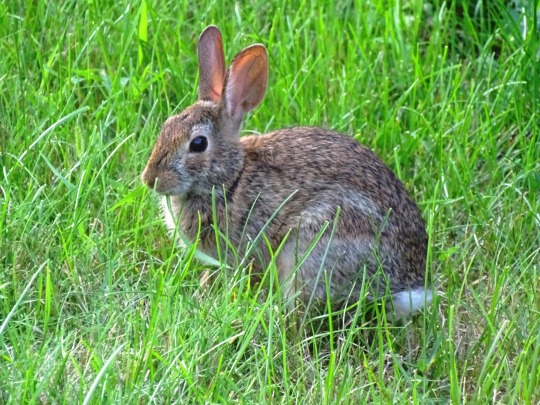
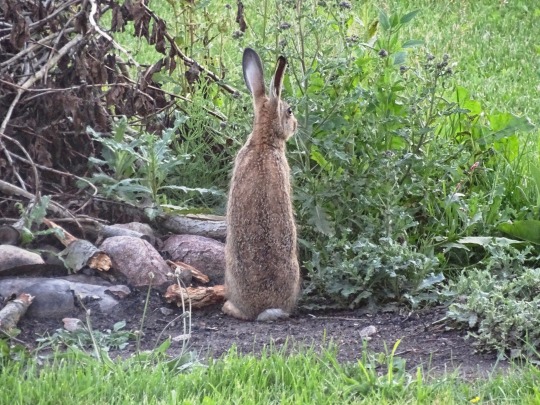

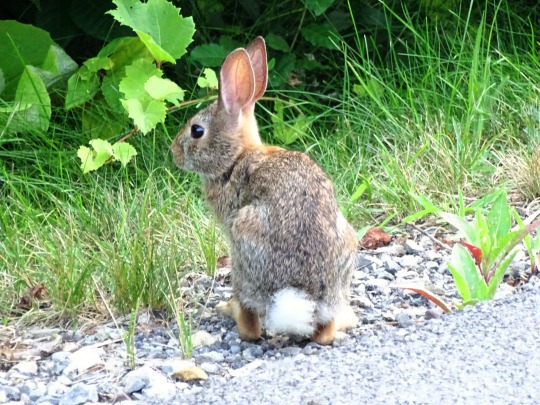





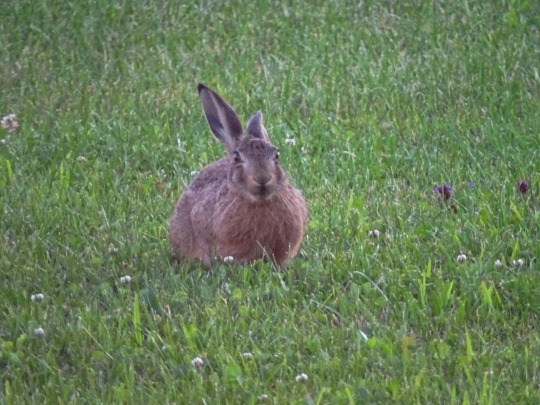



International Rabbit Day
International Rabbit Day is celebrated on September 23 of this year. A day for the rabbits or bunnies as to bring awareness about the plight they are facing. Rabbits are the long-eared, short-tailed mammal with fluffy soft hair which is not only pets but are killed for various other reasons. The International Rabbit Day is observed as to promote, protect and care for the rabbits both the domestic and wild.
“The raccoons, foxes, beavers, chinchillas, minks, rabbits, and yes, sometimes even dogs and cats that are killed for fur are not very different from your beloved dog or cat. They all have eyes, ears, and hearts. They all experience pain when they are physically maimed. They shake with fear when they experience terror.” – Jane Velez-Mitchell
History of International Rabbit Day
International Rabbit Day was founded by The Rabbit Charity from the UK in the year 1998. The day will usually be observed on the fourth Saturday or Sunday in the month of September. The aim of the Charity is to protect abandoned or unwanted rabbits and provide them with permanent shelters. Celebrating the day for bunnies will promote and educate all sort of people about the threats faced by them. Rabbits can be kept as a pet as they will be a good companionship to the humans. Rabbits are usually referred as a symbol of fertility or rebirth. They have long been related to the spring and Easter as the Easter Bunny. The habitat of rabbits includes grasslands, meadows, woods, deserts, and wetlands. Rabbits usually live in groups, and the European rabbits are the best-known species. They live in the underground burrows, or in the rabbit holes. More than half of the world’s rabbit population lives in the North America. Most often people think that rabbits are quiet and reserved pets, but any rabbit parent will tell you that the pet rabbits have a lot of personalities and offer lots of companionships. When rabbits are happy, then they will jump and twist which is called as the binky. Bunnies are very expressive and sensitive mammals that do all kinds of quirky and endearing behavior. On the other side, rabbits are harmed for medical and cosmetic testing, hunting, eating, fur farming and, casseroling. Thus, International Rabbit Day aims in providing some awareness about this charming little bunnies.
How to Celebrate International Rabbit Day
The best way to celebrate International Rabbit Day is you can adopt a bunny if hadn’t owned one. If you already have a bunny, then take some extra time to spend with those lovable pets. Bring awareness to the people near you about the plight of the rabbits.
Source
#Trelleborg#Sweden#wildlife#rabbit#hare#animal#nature#flora#fauna#travel#original photography#vacation#summer 2020#Syracuse#New York#2019#International Rabbit Day#fourth Saturday of September#23 September 2023#Onondaga Lake#USA#InternationalRabbitDay
33 notes
·
View notes
Text
Whispers from Above

Yesterday morning, Charlie and I were sitting outside, the sky was overcast by clouds. Looking through the trees of the forest, I noticed a bird approaching from the northeast. At first, I thought it was a vulture because they are gliding around all the time. Then, when the bird broke over the trees, I realized that it was a great blue heron (Ardea herodias).
"Great Blue Herons in the northeastern U.S. and southern Canada have benefited from the recovery of beaver populations, which have created a patchwork of swamps and meadows well-suited to foraging and nesting." - allaboutbirds.org
@birdcounter
#photo#photography#photographer#photographylovers#birds#birdwatching#birdsphotography#birds of north america#birdlovers#birdphotography#great blue heron#birbs#birding#bird watching#birds nature#birdingphotography#bird photography#bird
10 notes
·
View notes
Text
My next post in support of Ukraine is:
Next site, Desna-Starohutskyi National Nature Park in Sumy Oblast. It sits on the Desna River about 185 miles upstream from where the Desna runs into the Dnipro River, and it's part of the Desniaksyi Biosphere Reserve. The park has meadows with tall grasses, forests of aspen, oak, and ash trees, and alder swamps. It also includes the southern part of the Bryansk Forest, which continues into "russia," as sadly, the park sits right at the border with muscovy. The animal life in the park includes elk, roe deer, wolves, squirrels, & beavers have started returning to the marshy parts of the park. And, there's 134 different species of birds known to breed in the park. #StandWithUkraine
#SlavaUkraïni 🇺🇦🌻
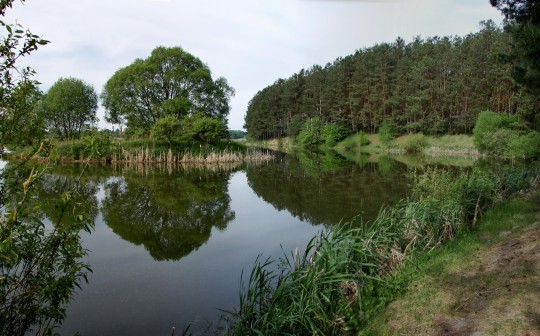

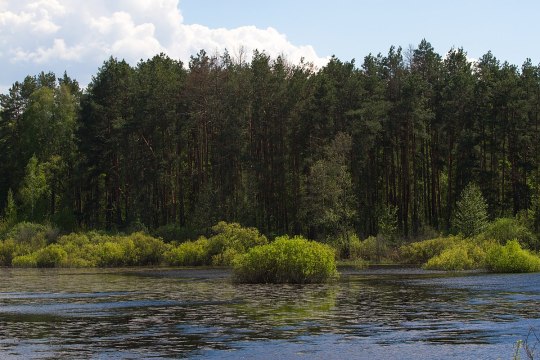

And here's another pic of Volodymyr Zelenskyy and Olena Zelenska from happier times, along with their daughter Oleksandra, who is 19 years old now, so this is from several years ago. I hope they & all Ukrainians can be families together again soon. #SlavaUkraïni 🇺🇦🌻

13 notes
·
View notes
Text
Warrior cat name Ideas
Prefixes - A-Z
A
Acorn
Adder
Amber
Ant
Apple
Arch
Arrow
Aspen
Ash
Asher
Alder
Amber
B
Badger
Bark
Beech
Bellow
Birch
Berry
Bird
Black
Blizzard
Brave
Breeze
Bright
Brown
Bell
Bug
Beetle
Bluebell
Blue
Bounce
Brindle
Brush
Bush
Buzzard
Buzz
Bee
Bumble
Bass
Basil
Bubble
Brine
Beaver
Bison (I feel like this only goes good with ‘horn’ or Bisonpelt/fur.)
Bat
Bone
Butterfly
Burdock
Broken
Bramble
Bracken
Bay
Brisk
Blossom
Briar
Boil
Branch
Bud
C
Cloud
Cloudy
Crystal
Cold
Cricket
Cliff
Cardinal
Crying
Cougar
Coyote
Cobweb
Chick
Cow
Cave
Cheetah
Carrot
Coral
Cactus
Claw
Cedar
Cherry
Cinder
Clover
Copper
Creek
Crooked
Crouch
Crow
D
Dew
Dewy
Duck
Dusty
Dust
Dune
Down
Dagger
Dodge
Dolphin
Daisy
Doe
Dapple
Dappled
Dark
Dawn
Dead
Dove
Drift
Dusk
E
Eagle
Ebony
Echo
Egg
Eel
Ember
F
Fallen
Fallow
Fawn
Feather
Fennel
Fern
Ferret
Finch
Fire
Flame
Fleet
Flint
Flower
Flow
Fly
Fox
Freckle
Frog
Frost
Furze
Fuzzy
Foal
Falling
Fall
G
Gale
Gust
Golden
Gold
Goose
Gorse
Gorge
Grass
Gray
Green
Grass
Goldfish
Guppy
Ghost
H
Hail
Half
Hare
Hawk
Hay
Hoot
Hazel
Heather
Heavy
Hollow
Holly
Honey
Honeycomb
Hummingbird
Horse
Happy
Hornet
Hound
Heron
I
Ice
Ivy
J
Jagged
Jay
Joy
Jaguar
Jackdaw
Jump
Juniper
K
Kestrel
Kink
Koi
L
Lake
Larch
Leaf
Lark
Leopard
Lichen
Lightning
Lily
Lion
Little
Lizard
Log
Long
Lost
Loud
Low
Lynx
M
Maggot
Mallow
Maple
Marsh
Meadow
Milk
Minnow
Mint
Mist
Misty
Mole
Moon
Morning
Moss
Mossy
Moth
Mottle
Mouse
Mouth
Mud
Mumble
Mink
Muddy
Moonlight
Mountain
Mushroom
Monkey
N
Nettle
Needle
Nut
Newt
Night
Nimble
O
Oak
Oat
Odd
Olive
One
Otter
Owl
Orange
Ocean
Orca
Opal
P
Pale
Perch
Pool
Pike
Peak
Prickle
Pounce
Pine
Petal
Petal
Pebble
Pear
Patch
Pirate(kittypet or loner)
Polar
Peach
Panda
Pond
Pigeon
Plum
Q
Quail
Quick
R
Rabbit
Rain
Ragged
Rat
Rattle
Root
Raspberry
Reed
Red
Robin
Rock
Rose
Rowan
Rubble
Running
Rushing
Rush
Russet
Rust
Rye
Raven
Raccoon
Rustle
Rattlesnake
Ravine
Rapid
S
Sage
Short
Sheep
Sedge
Shrew
Slate
Slow
Snail
Sneeze
Sorrel
Soot
Spider
Spruce
Sun
Sunny
Swallow
Shallow
Shade
Sharp
Scorch
Sand
Sandy
Sky
Silver
Smoke
Snake
Soft
Snow
Sparrow
Speckle
Splash
Spotted
Squirrel
Stalking
Stalk
Stalker
Starling
Stone
Storm
Stumpy
Stump
Sweet
Swift
Shred
Sloe
Shell
Seed
Shimmer
Shimmering
Skunk
Spirit
Squid
Shy
Sound
Summer
Sapphire
Spiraling
Spiral
Shark
Saturn
T
Tall
Talon
Tooth
Timber
Tiger
Twig
Tumble
Thorn
Thistle
Thrush
Tawny
Tangle
Ting
Trout
Torn
Toad
Tiny
V
Vine
Vixen
Void
Vole
W
Wasp
Weasel
Web
Weed
Wet
Whisker
White
Whale
Wild
Willow
Wind
Wolf
Winter
Wisteria
Whisper
Whispering
Water
Wave
Waver
Whisper
Watermelon
Whistle
Wood
Y
Yellow
Yew
Yarrow- suggested
You guys DONT WANNA KNOW how LONG this took. I’m crying. And I might’ve missed some so feel free to send me messages in chat to request me editing it and putting it in some (not like messaging but the. Chat in this post lol.)
@cryptidclaw I also did this for our Au to help us with renaming.
I will get to suffixes soon I promise.
123 notes
·
View notes
Text

Sharpshot Nature .Com 02733-tod-037408 Beaver Hut
NIKON D7500 - ƒ/6.3 1/400 600mm ISO800 - Crex Meadows Wildlife Refuge, WI
Please help spread the content!
View the entire gallery - https://sharpshotnature.com
#sharpshotnature#beaverhut#hut#lake#water#reflection#grass#plant#tree#baldeagle#eagle#bird#birdofprey#autumn#fall#nature#naturephotography#wildlife#wildlifephotography#photography
10 notes
·
View notes
Text

Moonrise over the marsh at Devils Den, Gettysburg. A family of beavers has made their home here over the last decade, transforming a meadow into the most beautiful wetland.
8 notes
·
View notes
Text

Elu of the Fifteen
ILLUSTRIOUS ELECT OF THE FIFTEEN
10th Degree of Freemasonry
Part V
Not more naturally does the beaver build or the mocking-bird sing his own wild, gushing melody, than the true Mason lives in this beautiful outward life. So from the perennial spring swells forth the stream, to quicken the meadow with new access of green, and perfect beauty bursting into bloom. Thus Masonry does the work it was meant to do. The Mason does not sigh and weep, and make grimaces. He lives right on. If his life is, as whose is not, marked with errors, and with sins, he ploughs over the barren spot with his remorse, sows with new seed, and the old desert blossoms like a rose. He is not confined to set forms of thought, of action, or of feeling. He accepts what his mind regards as true, what his conscience decides is right, what his heart deems generous and noble; and all else he puts far from him. Though the ancient and the honorable of the Earth bid him bow down to them, his stubborn knees bend only at the bidding of his manly soul. His Masonry is his freedom before God, not his bondage unto men. His mind acts after the universal law of the intellect, his conscience according to the universal moral law, his affections and his soul after the universal law of each, and so he is strong with the strength of God, in this four-fold way communicating with Him.
https://freemasoninformation.com/masonic-education/books/morals-and-dogma/elu-of-the-fifteen/
#freemasonry#freemasons#Albert Pike#masonic lodge#illustration#masons#masonic temple#Masonic Education#symbolism#esoteric#art#morals and dogma#occult#hermetic
5 notes
·
View notes